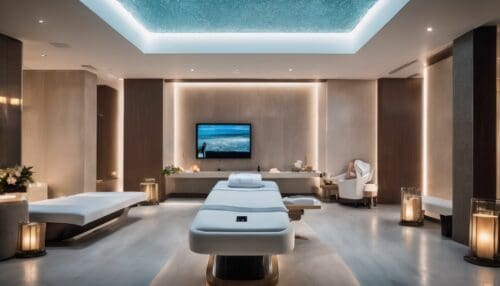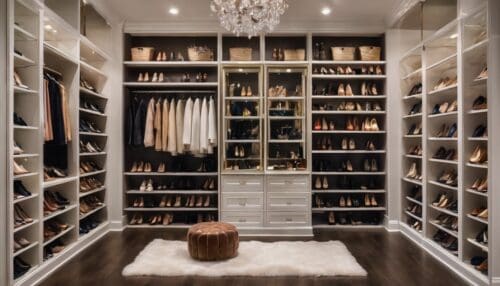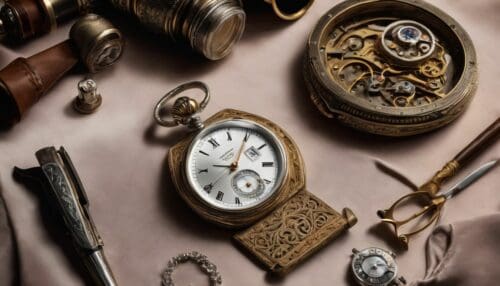Updated On: December 12, 2023 by Yasmin Elwan
Luxury interior designs embody an exquisite fusion of artistry, functionality, and exclusivity, converging to craft spaces that transcend the ordinary. Within the illustrious world of high-end interiors, we embark on a captivating journey through time, delving into the nuanced evolution of styles, materials, and design philosophies that have intricately shaped the fabric of luxury interior landscapes.
This exploration unravels the rich tapestry of opulence, providing a glimpse into the intricate craftsmanship and innovative thinking that define the pinnacle of interior design sophistication.
Historical Evolution of Luxury Interior Design
Imagine stepping through a time machine, whisked away on a journey through the evolution of luxury interior design. Our first stop? Ancient Egypt, where opulent tombs adorned with intricate hieroglyphs and gold-plated furniture, whispered tales of wealth and power. Fast forward to Renaissance Italy, where sprawling palaces like the Medici’s Pitti Palace showcase a newfound love for symmetry, frescoed ceilings, and grand tapestries.
Next, we find ourselves in the opulent halls of Baroque Europe, where gilded mirrors, ornate chandeliers, and an abundance of marble exude a dramatic, almost theatrical, sense of grandeur. Rococo France offers a more playful side of luxury, with pastel colours, delicate floral patterns, and a focus on comfort and leisure, evident in chaise longues and boudoirs.
The 19th century brings us to Victorian England, where dark wood furniture, heavy fabrics, and a cluttered aesthetic reflect the era’s social and economic change. In stark contrast, the 20th century embraces minimalism and functionality, with icons like Le Corbusier and Mies van der Rohe stripping away excess in favour of clean lines, open spaces, and natural light.
Modern-Day Luxury Interior Design
Today, luxury interior design embraces a global perspective, drawing inspiration from diverse cultures and historical periods. Natural materials like wood and stone coexist harmoniously with cutting-edge technology, creating spaces that are both elegant and functional. Sustainability is a growing concern, with designers seeking eco-friendly materials and responsible manufacturing practices.
Looking ahead, the future of luxury interior design promises to be even more innovative and personalised. Smart homes, immersive experiences, and even the integration of artificial intelligence offer exciting possibilities for creating spaces that are truly tailored to our individual needs and desires.
Elements of Luxury Interior Designs

Luxury interior design isn’t just about expensive materials and opulent furnishings. It’s a symphony of carefully orchestrated elements that create a space that’s both beautiful and functional, a sanctuary that reflects your unique personality and style. Imagine stepping into a room where natural light bathes hand-crafted furniture, casting warm shadows across exquisite fabrics and textures. Every detail, from the intricate crown moulding to the carefully curated artwork, whispers of quality and sophistication.
A sense of timeless elegance permeates the space, where classic pieces like a Chesterfield sofa or a Persian rug coexist seamlessly with modern touches like a sleek fireplace or a statement lighting fixture. Natural materials play a starring role, with warm wood, cool marble, and luxurious textiles adding a sense of organic beauty. The colour palette is sophisticated but inviting, perhaps incorporating bold accents against a backdrop of calming neutrals.
Expert craftsmanship is evident in every corner, from the intricate details of a hand-carved chair to the perfectly laid parquet flooring. Every piece is chosen with purpose, contributing to the overall sense of balance and harmony. Technology is seamlessly integrated, enhancing comfort and convenience without compromising the aesthetic. Hidden speakers provide a soundtrack to your life, while smart lighting systems adjust to your mood and preferences.
But luxury isn’t just about aesthetics; it’s also about creating a comfortable and inviting space that reflects your individuality. Personalised touches like family heirlooms, meaningful artwork, and carefully curated collections add a layer of warmth and personality. The space is designed to be lived in, enjoyed, and shared with loved ones, creating memories that will last a lifetime.
Iconic Interior Designers and Their Signature Styles
Renowned designers have left an enduring legacy through their distinctive approaches. Examining the work of figures like Kelly Wearstler and Philippe Starck provides insight into the fusion of creativity and functionality that defines luxury design.
- Dorothy Draper: Known for her bold, theatrical designs with vibrant colours, geometric patterns, and large-scale furniture. Signature style: Hollywood Regency.
- Elsie de Wolfe: Pioneered a more modern, streamlined aesthetic that rejected the cluttered interiors of the Victorian era. Signature style: Anti-Victorian.
- Billy Baldwin: Mastered the art of mixing historical pieces with modern elements, creating elegant and sophisticated spaces. Signature style: American Modernism.
- David Hicks: Popularised the use of geometric patterns and bold colours, often with a black and white base and unexpected juxtapositions.
- Jean-Michel Frank: Embraced a minimalist approach with clean lines, neutral colours, and luxurious materials. Signature style: French Minimalism.
- Axel Vervoordt: Blends historical, industrial, and natural elements to create a timeless and serene atmosphere. Signature style: Wabi-Sabi.
- Kelly Wearstler: Known for her eclectic and glamorous style, incorporating bold colours, unexpected textures, and vintage pieces. Signature style: Hollywood Glamour.
- India Mahdavi: Celebrates colour and playfulness with bold hues, geometric patterns, and unexpected juxtapositions. Signature style: Pop Art/Memphis Group.
- Jonathan Adler: Creates whimsical and colourful interiors with a focus on pop culture references and quirky details. Signature style: Modern Glam.
- Katharine Pooley: Globally recognised for her work on high-end residential and commercial projects, from private homes and mansions to hotels, spas, and yachts.
Current Trends in Luxury Interior Design

The world of luxury interior design is experiencing a dynamic shift, blending timeless elegance with modern innovation and a growing focus on sustainability. Bold colours and geometric patterns are making a comeback, adding vibrancy and visual interest to spaces. Natural materials like wood, stone, and organic textiles are taking centre stage, creating a connection with the outdoors and fostering a sense of well-being.
Sustainability is no longer just a trend; it’s a core principle in luxury design. Eco-conscious consumers are driving demand for ethically sourced materials, recycled elements, and energy-efficient solutions. Designers are responding by incorporating green technology like smart lighting systems, renewable energy sources, and natural ventilation.
Technology plays a subtle yet crucial role in modern luxury. Smart homes are becoming increasingly sophisticated, seamlessly integrating automation, connectivity, and personalised experiences. From voice-controlled lighting to hidden entertainment systems, technology enhances comfort and convenience without compromising the aesthetic.
The lines between indoor and outdoor living are blurring, creating seamless transitions and extending the living space. Large windows, expansive patios, and outdoor furniture blur the boundaries, allowing residents to connect with nature and embrace the outdoors as an extension of their home.
Personalisation remains key, with luxury interiors reflecting the unique personalities and lifestyles of their inhabitants. Bespoke furniture, curated artwork, and treasured heirlooms add emotional depth and individuality to each space.
Comfort and well-being are paramount in today’s luxury homes. Designers are creating spaces that promote relaxation and rejuvenation, incorporating elements like spa-like bathrooms, dedicated wellness areas, and calming colour palettes. Biophilic design principles are also gaining traction, bringing nature indoors to enhance mental and physical well-being.
Case Studies of Extravagant Residential Projects
Delving into the world of luxury residences is a captivating experience, offering a window into the boundless creative potential of interior design. Iconic projects like the Serenity in Singapore and the One Hyde Park Penthouse in London stand as testaments to the ingenuity and artistry that can transform mere spaces into personalised havens of unparalleled opulence.
Serenity in Singapore: Contemporary Luxury and Environmental Harmony
The Serenity in Singapore, designed by renowned architect Moshe Safdie, is a masterpiece of contemporary design that effortlessly blends luxury with environmental sensitivity. The expansive residence boasts a cascading infinity pool that seems to merge seamlessly with the city skyline while floor-to-ceiling windows offer breathtaking panoramic views.
Natural light floods the meticulously curated interior, highlighting the exquisite use of marble, silk, and rare woods. Every detail, from the handcrafted furniture to the bespoke art installations, speaks of a commitment to creating a space that is both aesthetically pleasing and deeply personal.
One Hyde Park Penthouse: Refined Grandeur in London
The One Hyde Park Penthouse, perched high above the bustling streets of London, offers a glimpse into a world of refined grandeur. Designed by the esteemed Candy & Candy, the penthouse features a breathtaking double-height living area adorned with gold leaf and crystal chandeliers. The expansive marble-clad bathrooms evoke a sense of spa-like serenity, while the custom-designed kitchens boast state-of-the-art appliances and bespoke cabinetry.
These are just two examples of how luxury interior designs can elevate the very concept of living. By combining cutting-edge technology with unparalleled attention to detail, these iconic projects demonstrate the transformative power of design to create spaces that are not only aesthetically pleasing but also deeply personal expressions of individual taste and aspirations.
Luxury Interior Design in Commercial Spaces
The opulence seen in residential design extends to commercial spaces, shaping the ambience of high-end retail outlets, luxurious hotels, and corporate environments. The interplay between functionality and aesthetics defines these spaces, creating memorable experiences for patrons.
Challenges and Innovations in Luxury Interior Design
Creating exclusive, personalised spaces poses unique challenges. Designers are at the forefront of innovative solutions, addressing sustainability concerns and navigating the evolving landscape of luxury interior design.
Creating truly exclusive and personalised spaces in a world increasingly driven by mass production requires a deep understanding of the individual client’s desires and aspirations. This necessitates a collaborative approach, where designers actively engage with clients, delve into their individual stories, and translate their unique vision into a tangible reality.
This can be achieved through the meticulous selection of bespoke pieces, the incorporation of personal heirlooms, and the careful curation of artwork and decorative elements that reflect the client’s personality and interests.
Sustainability has emerged as a crucial element in the equation. Luxury consumers are increasingly demanding environmentally conscious solutions, prompting designers to seek out sustainable materials, embrace eco-friendly construction practices, and incorporate energy-efficient technologies. This requires collaboration with specialised architects, engineers, and material suppliers who share a commitment to environmental responsibility.
Technological advancements are constantly reshaping the possibilities of luxury interior design. From smart home systems that optimise lighting, temperature, and security to immersive entertainment experiences and the integration of artificial intelligence, technology has the potential to enhance comfort, convenience, and personalised experiences.
However, designers must tread carefully, ensuring that technology seamlessly complements the overall aesthetic and does not detract from the human connection and emotional resonance that are fundamental to luxury design.
In this dynamic environment, adaptability and innovation are essential for success. Designers must stay abreast of emerging trends, explore new materials and technologies, and constantly push the boundaries of creativity. They must also be adept at navigating the changing landscape of consumer preferences, anticipating future needs, and adapting their approach to cater to a more discerning clientele.
The Future of Luxury Interior Design
As we peer into the future, trends suggest a continued emphasis on personalisation, sustainable practices, and the integration of artificial intelligence. The concept of luxury is undergoing a transformation, adapting to the changing needs and preferences of discerning clients.
Luxury will no longer be defined by ostentatious displays of wealth but by the seamless integration of technology, comfort, and sustainability. It will be about creating spaces that nourish the soul, inspire creativity, and promote a sense of well-being.
In the grand tapestry of luxury interior design, every element plays a crucial role. From historical influences to contemporary trends, from the hands of master craftsmen to the visions of pioneering designers, luxury interior design remains a beacon of sophistication and innovation. As we conclude our exploration, the allure of luxury interiors persists, promising a future where opulence and elegance continue to shape the way we live and experience our surroundings.











